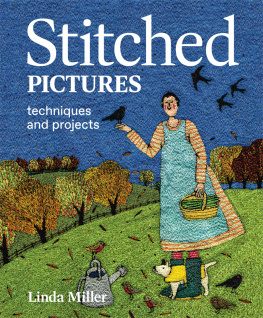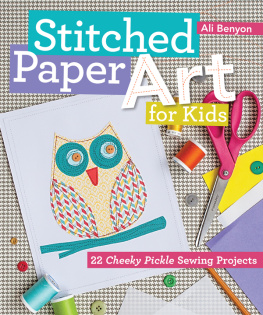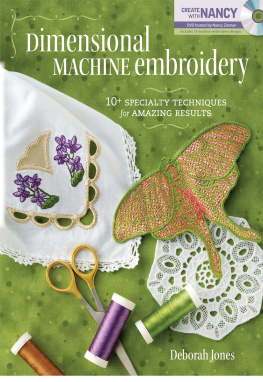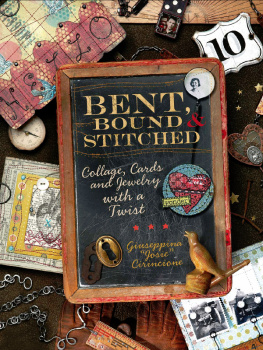Page List
Stitched
PICTURES
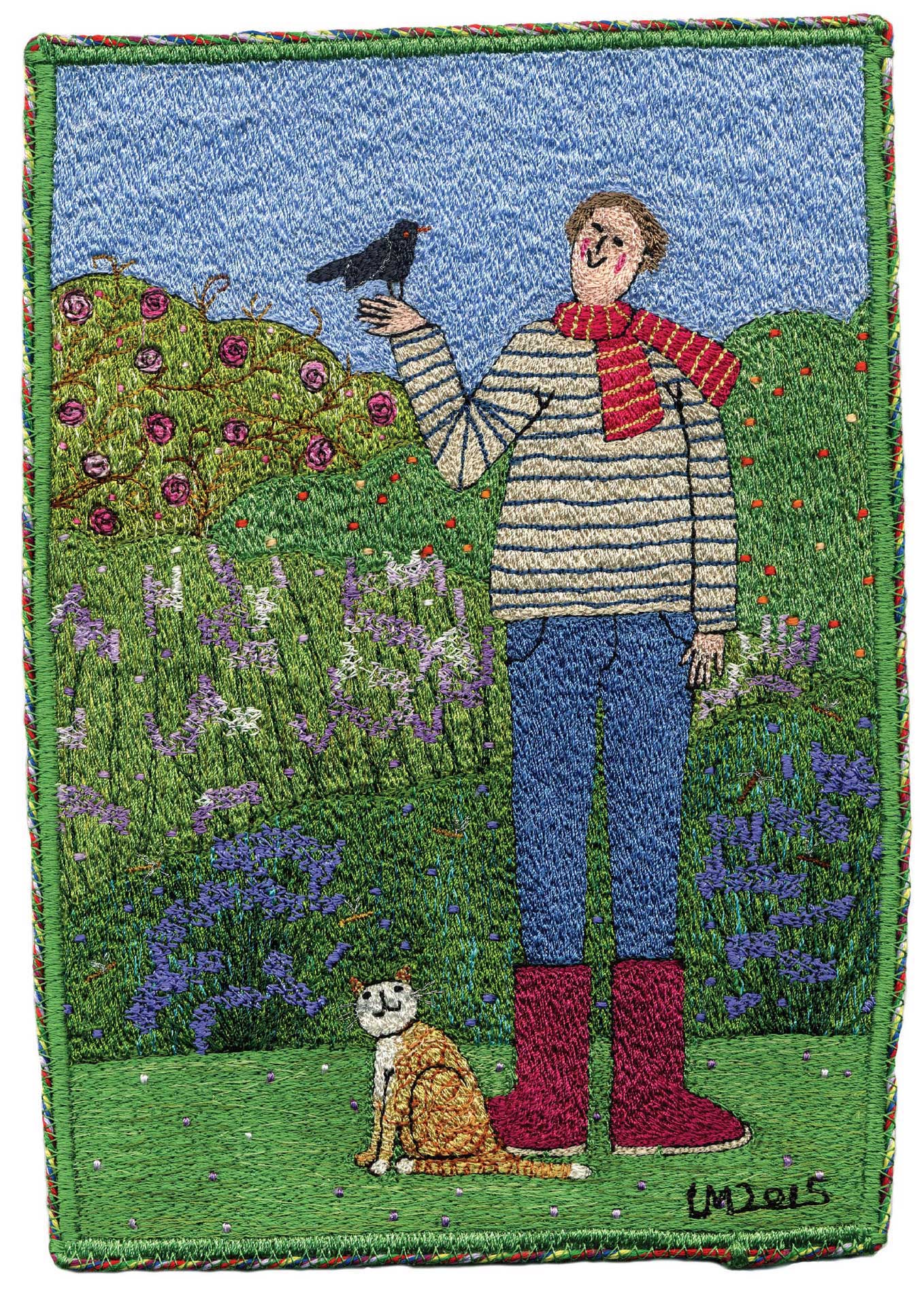
Blackbird Garden by Linda Miller, 23 17cm (9 6in), free machine embroidery. (Photo: Michael Jennings)
Linda Miller
Stitched
PICTURES
techniques and projects

First published in 2022 by
The Crowood Press Ltd
Ramsbury, Marlborough
Wiltshire SN8 2HR
www.crowood.com
This e-book first published in 2022
Linda Miller 2022
All rights reserved. This e-book is copyright material and must not be copied, reproduced, transferred, distributed, leased, licensed or publicly performed or used in any way except as specifically permitted in writing by the publishers, as allowed under the terms and conditions under which it was purchased or as strictly permitted by applicable copyright law. Any unauthorised distribution or use of this text may be a direct infringement of the authors and publishers rights, and those responsible may be liable in law accordingly.
British Library Cataloguing-in-Publication Data
A catalogue record for this book is available from the British Library.
ISBN 978 0 71984 038 8
Front cover design: Sergey Tsvetkov
Front cover:The Birds Sing Your Name by Linda Miller, 25 19cm (10 7in), free machine embroidery
The designs in this book are copyright and must not be stitched for resale.
All designs by Linda Miller.
All photographs are by Oliver Lane, unless specified otherwise.
Disclaimer
The author and publisher have made every effort to ensure that all the instructions in the book are accurate and safe, and therefore cannot accept liability for any resulting injury, damage or loss to persons or property, however it may arise.
INTRODUCTION
M aking textile pictures with a sewing machine is an exciting and innovative way of expressing ones creative ideas. The sewing machine is a wonderful drawing tool, and mark marking with stitch upon pieced and layered fabrics is an ideal medium in which to create exciting and versatile textile pictures. Whatever materials are used in conjunction with stitch, communicating and expressing ourselves through textiles allows us to create a narrative through which we can tell our story.
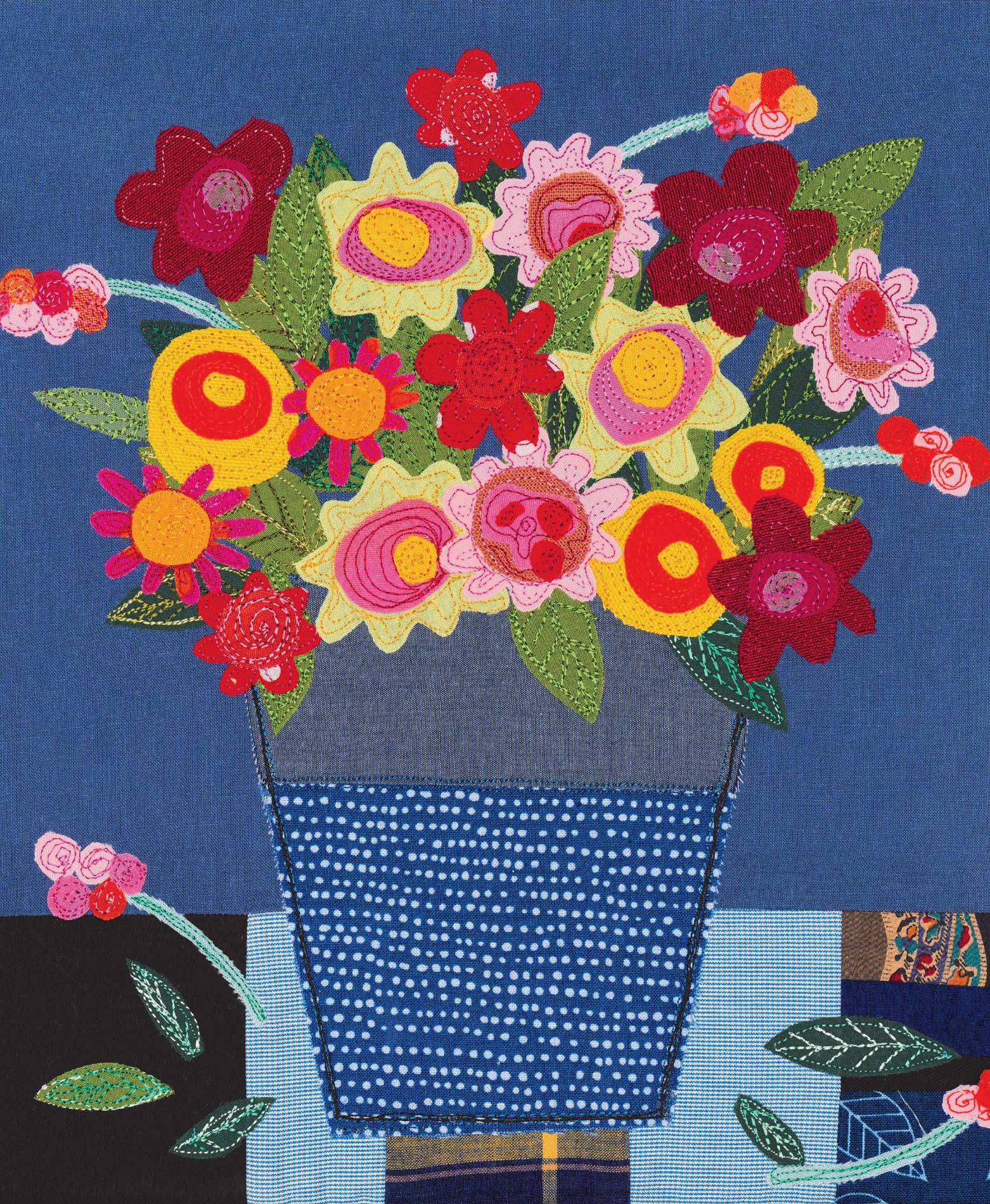
Flower Bouquet by Linda Miller, 29 29cm (11 11in), fabric appliqu and free machine embroidery.
The Evolution of the Sewing Machine
The simple pleasure of decorative stitching has been experienced since the invention of the sewing machine in the late nineteenth century and is still embraced today. The contemporary domestic sewing machine has changed almost beyond recognition from those early models and the range of precision stitching that can now be achieved is quite phenomenal. Anyone who enjoys machine sewing knows what a beautiful and versatile tool the sewing machine is. It is surely one of the most valued pieces of equipment within the workroom.
The twentieth century saw the mass production of the hand cranked sewing machine, which brought huge domestic change to the lives of women. No longer was home sewing purely achieved by hand. Purchasing a sewing machine for the household enabled women to make garments and create decorative domestic items with greater ease and speed for the whole family and home. This gave many women more time to pursue other activities, both within and away from the household. Later still, the electric domestic sewing machine further transformed machine sewing for women, enabling them to produce a greater variety of textiles at speed.
Social and economic change has altered our lives unrecognizably from that of our forebears and one of the many qualities it has brought to domestic life is more free time in which to enjoy interests and pastimes. Household sewing is no longer a necessity, and for the devotee it is a pleasure. Over the twentieth century the critical profile of textiles as an art form was raised and imbued with a greater value and respect. This, alongside the technical development of the sewing machine, has enabled its change in use from that of a solely domestic object to a drawing and painting tool and this transformation in turn has empowered its user to become a respected and valued creator.
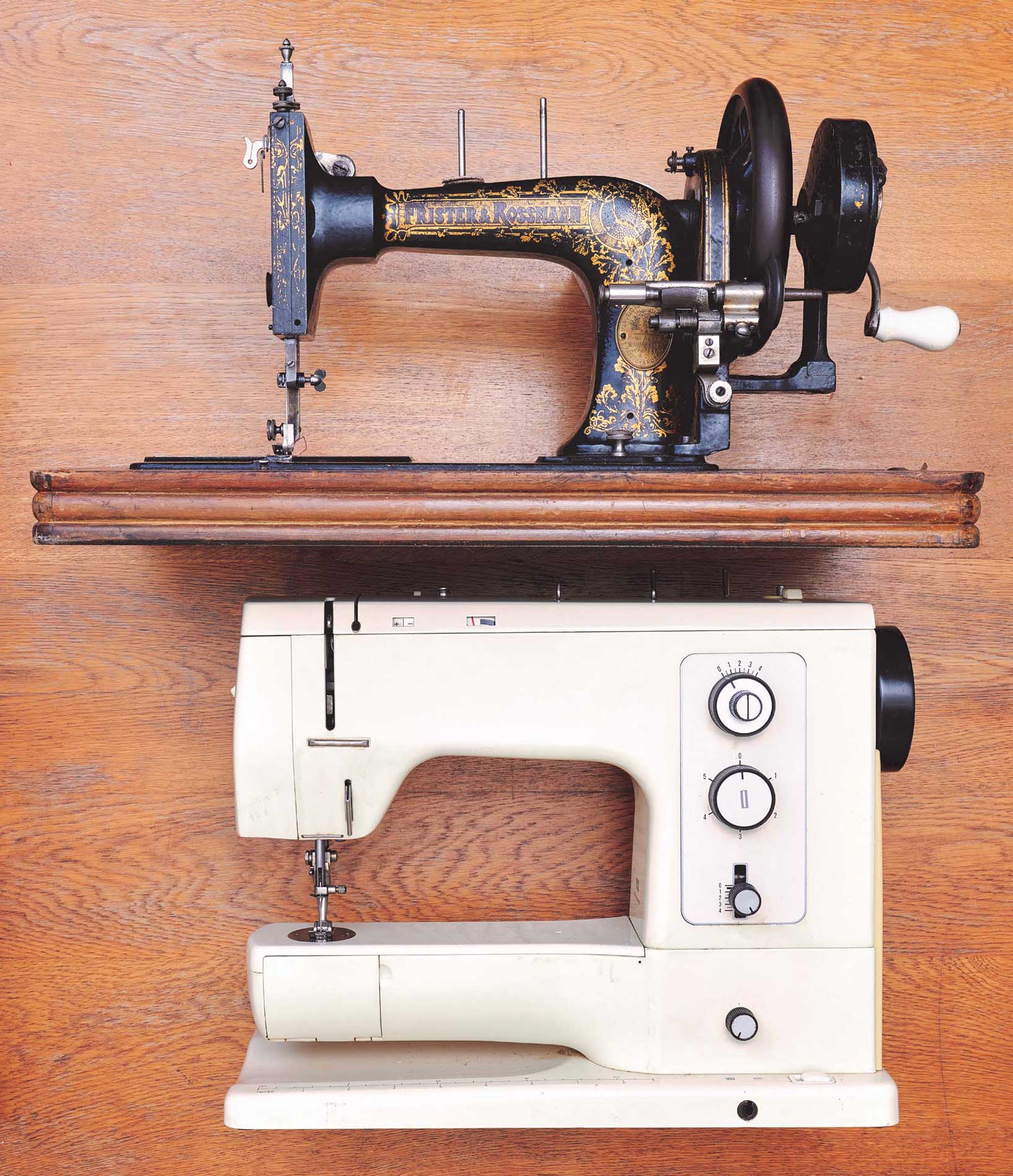
Through the centuries, the changing look of the sewing machine.
Exploring Textiles
Textiles as a medium can be very versatile. Fabric can be cut, manipulated and stitched with the greatest of ease and the simplest of tools. The wide range and availability of both fabric and thread has given the maker an exciting pallet of textile materials to use and explore. We can choose to use new or recycled fabrics, or a combination of both, and these can be used either on their own or mixed with an array of other art materials such as paper, card and found objects.
Museums and galleries hold a wealth of textiles in all forms, from every corner of the world. If you are unable to physically visit a museum or gallery, most can be accessed online. Whichever way you visit installations and exhibitions, the experience is invaluable. Looking and observing allows our creative knowledge and understanding to grow and develop. To see how a piece has been conceived and constructed enables us to further our own thought process and gain technical knowledge to utilize within our own work, and this in turn expands our own creative journey.
There are many things to consider when making and creating textile work, including the colour palette, the use of expressive stitch, fabric texture, subject matter, and the choice and placement of imagery. The process can consist of a series of questions as you try out different visual scenarios to develop before finding a final design you wish to develop into your textile artwork. Whichever fabric we are drawn to and whatever technique we favour, it is important for us to study work in as many disciplines as we can in order to further our knowledge of the many and varied textile media. Each textile artist creates their own unique style in the way in which they use and treat their chosen medium.
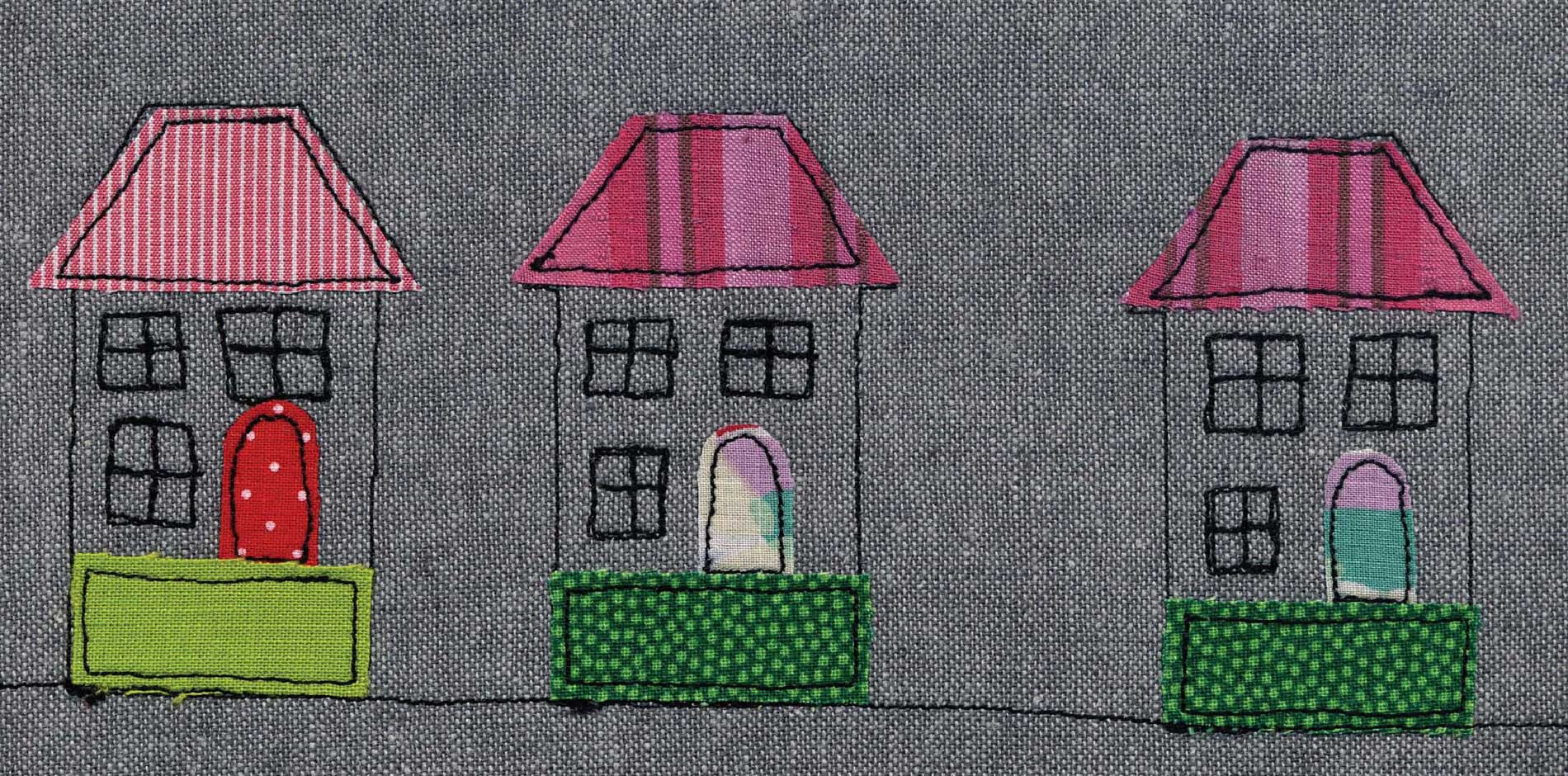
Three Houses by Linda Miller, 10 19cm (4 7in), fabric appliqu and free machine embroidery. (Photo: Michael Jennings)
Creating a Mood Board
The starting point for a textile picture can be achieved by creating a mood board. This can be an invaluable way in which to collate a group of visual references that can be then formed into an idea. Any visual and written sources that interest us can be used; items such as pictures, photographs, fabric swatches and overheard snippets of conversation. All at some stage will make it onto our mood board, ready to ignite our imagination. Items can be arranged by colour, theme, style or a mix of collaged pieces. There is no right or wrong way in which to create a mood board whatever works for the individual is the best way.

